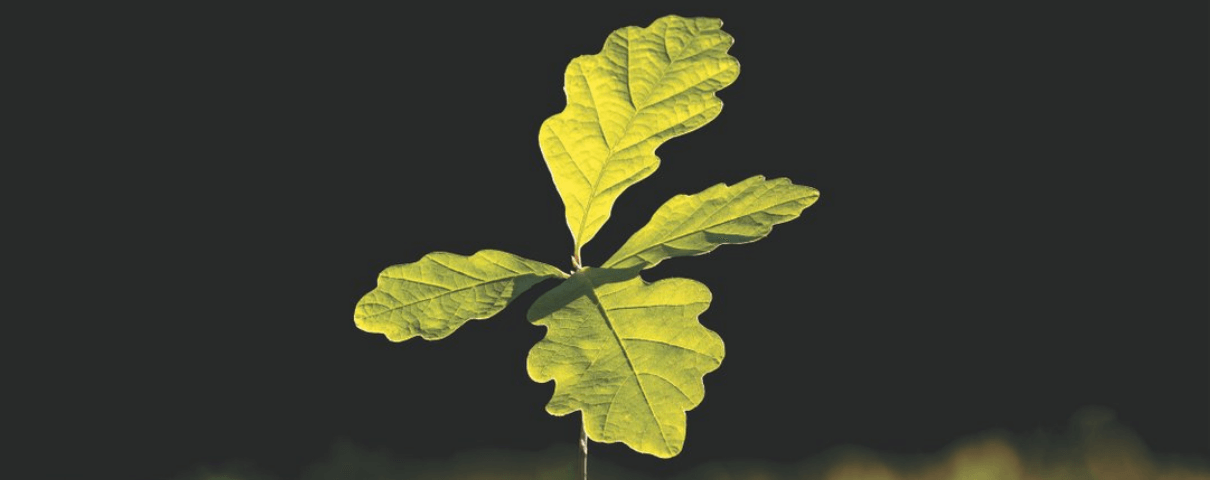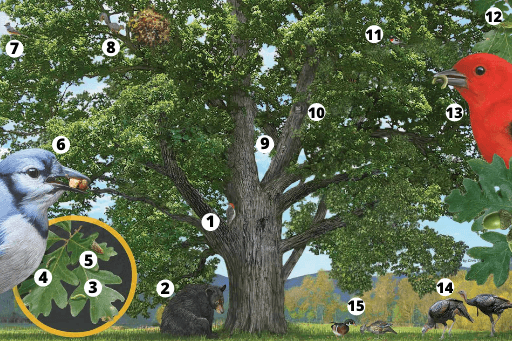The Mighty White Oak: Branching Out for Wildlife
Ecosystems function as a sum of their parts. Some parts, however, pull extra weight. Take the Eastern White Oak, an iconic tree found in 36 states. Known not only as one of the most important commercial trees — prized for furniture, flooring, and many other uses — this long-lived species plays out-sized roles in supporting birds and other wildlife. In the East, it's one of the most important species that native-plant gardeners can put in the soil, if they have the space.

“Caterpillars are the mainstay of most bird diets in North America,” writes Douglas W. Tallamy in his book Nature's Best Hope, “particularly when birds are rearing their young.” Tallamy and his colleague Kimberley Shropshire documented that across the U.S., oaks host the greatest caterpillar diversity: At least 934 caterpillar species were supported by oaks, 557 of these in the Mid-Atlantic region, with many of these on the Eastern White Oak. A single large tree can host thousands of individual caterpillars.
Able to live over 500 years and reach up to 180 feet tall, this tree is a leafy paradise for much more than caterpillars. Acorns carry the oak's seeds served up in a nutritious vessel, and every four to ten years, the trees drop an extra-heavy crop. Below, you will see just a few of the species that benefit from this bounty.
Holes and crevices of various sizes provide breeding and shelter sites for wildlife, including cavity-nesting birds such as owls, woodpeckers, chickadees, Eastern Bluebirds, Great Crested Flycatchers, and Tufted Titmice, along with flying squirrels, bats, and other mammals. Dropped limbs and fallen trunks decompose with the help of microbes, fungi, and invertebrates, which, in turn, attract animals that feed upon them, including other invertebrates, salamanders, skinks, and snakes.
Tree of Life
See if you can find all 15 species listed below the image. These creatures all benefit from the presence of Eastern White Oaks.
Image legend: 1. Red-bellied Woodpecker / 2. Black Bear / 3. Cankerworm (inchworm) / 4. Double-lined Prominent / 5. Smaller Parasa / 6. Blue Jay / 7. Great Crested Flycatcher / 8. Eastern Fox Squirrel / 9. Southern Flying Squirrel / 10. Eastern Screech-Owl / 11. Rose-breasted Grosbeak / 12. Common True Katydid / 13. Scarlet Tanager / 14. Wild Turkey / 15. Wood Duck



















































